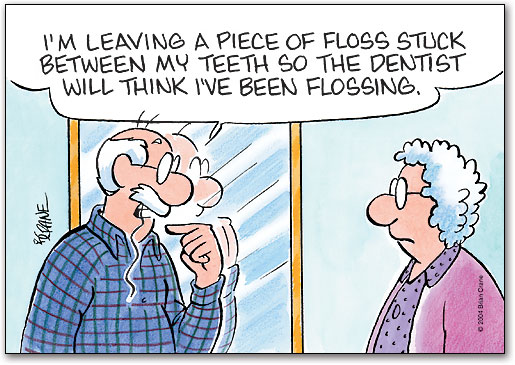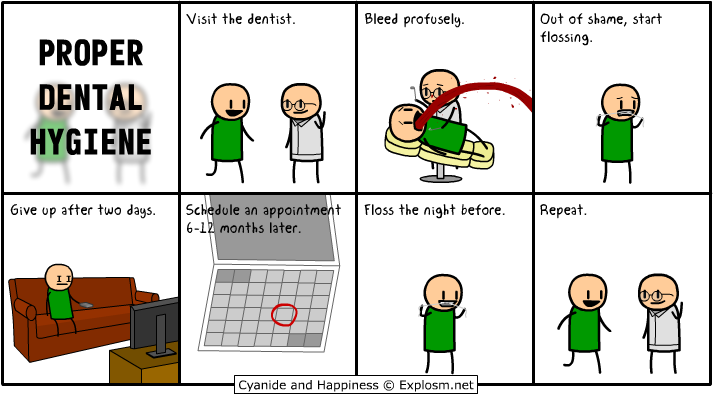So now that you’ve mastered your brushing technique, it’s time we take a deep look into the dark side…flossing. While brushing is the best way to remove the bacteria that accumulates on the front and back sides of your teeth and gums, it cannot, will not, and never will remove the bacteria that builds up between your teeth. But fear not! Interdental care to the rescue!
The plaque that builds on your teeth and gums starts off soft and can mostly be brushed and flossed off with proper technique. However, within about 24 to 36 hours, that plaque begins to calcify and harden, becoming tartar (also called calculus). In some people this hardening of the plaque happens very quickly. Once this happens, it is very difficult for your toothbrush and floss to remove the bacteria from your teeth. This is why we recommend flossing at least once a day, however, some people benefit from flossing twice a day or even after every meal. This is largely dependent on your diet and how quickly you develop plaque and tartar. We recommend talking to your Dentist and Dental Hygienist about how often you should be flossing.
There are many options when it comes to clearing away those pesky bacteria and food particles in between your teeth. We will go over a few of these options in a later blog but mastering your flossing technique is one of the most important skills to learn in order to keep those teeth of yours beautiful and healthy!
Have you ever seen articles about flossing and seen a picture just like the one below? Honestly, as a dental professional, these pictures make me cringe just a little.
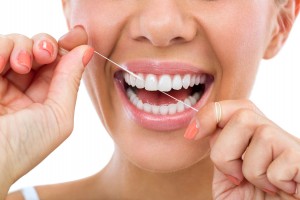
I mean…who flosses like that?
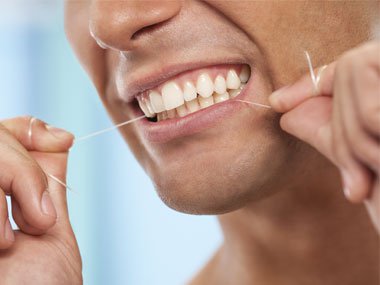
We don’t condone eating floss
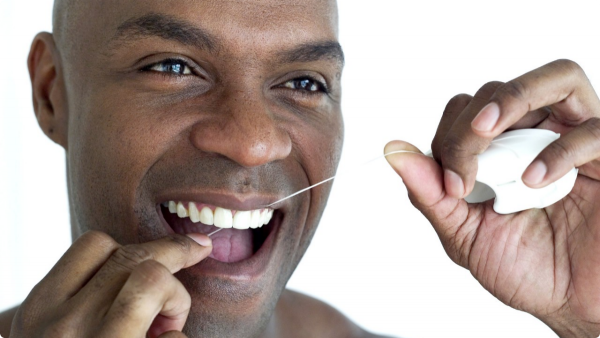
This guy…why is he holding the floss container?!?! WHY?!?!
Ok, *deep inhale*, enough with those. So what does it actually look like to floss?
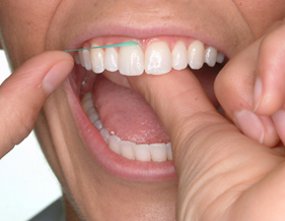
Oh yes, that looks better…
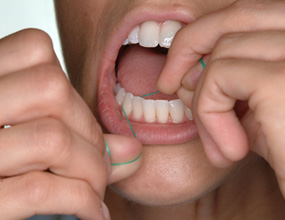
Look at that technique! Are you feeling the same euphoric satisfaction that I am? No? Just me then? Okay fine. But still, let’s take a step-by-step look at this technique we dental professionals call, C-Shaped Flossing (*drum roll*…)
Step One:
We recommend using about an arms-length of floss (the distance between your hand and your shoulder). Go ahead and wrap that floss around your middle finger, leaving a space for your index finger and thumb.
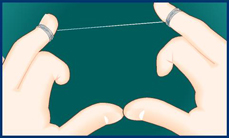
Step Two:
Using your index finger and thumb, gently wiggle the floss in between your teeth. Take special care to make sure you don’t snap the floss between your teeth as this can cause damage to your gums. Gently slide the floss in – using waxed floss or the tape-like floss will help if you have tight spaces.
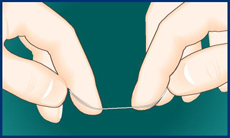
Step Three:
Again using your index finger and thumb, create a “C” shape around the tooth (hence why it’s called C-Shaped Flossing. Get it? Get it?? Clever, huh?). Gently guide the floss down the tooth and under the gums, move the floss up and down the tooth (not side-to-side) about 2-3 times. Do this technique to both sides of every tooth.

Don’t forget your back teeth!
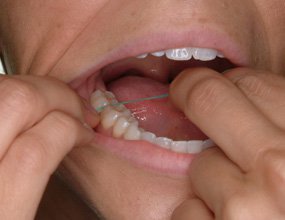
Step Four:
We generally recommend flossing before brushing and preferably in the evening or after your last meal. However, just getting into the routine of flossing is the most important step. If this means that you can only do it in the morning or in the middle of the day before brushing, that’s ok too! We won’t complain!
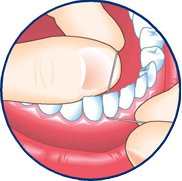
Flossing and Bleeding Gums
Bleeding gums while brushing or flossing is usually indicative of gum disease like gingivitis or periodontitis. While the urge is to stop flossing, the best thing to do is to actually floss more! If something is caught under your gums such as plaque or food, your gums can become irritated, inflamed and bleed easily. Brushing twice a day and gently flossing every day can help remove the irritant and allow your gums to heal. If bleeding persists after a couple weeks, we recommend seeing your Dentist or Dental Hygienist.
Happy Flossing!
